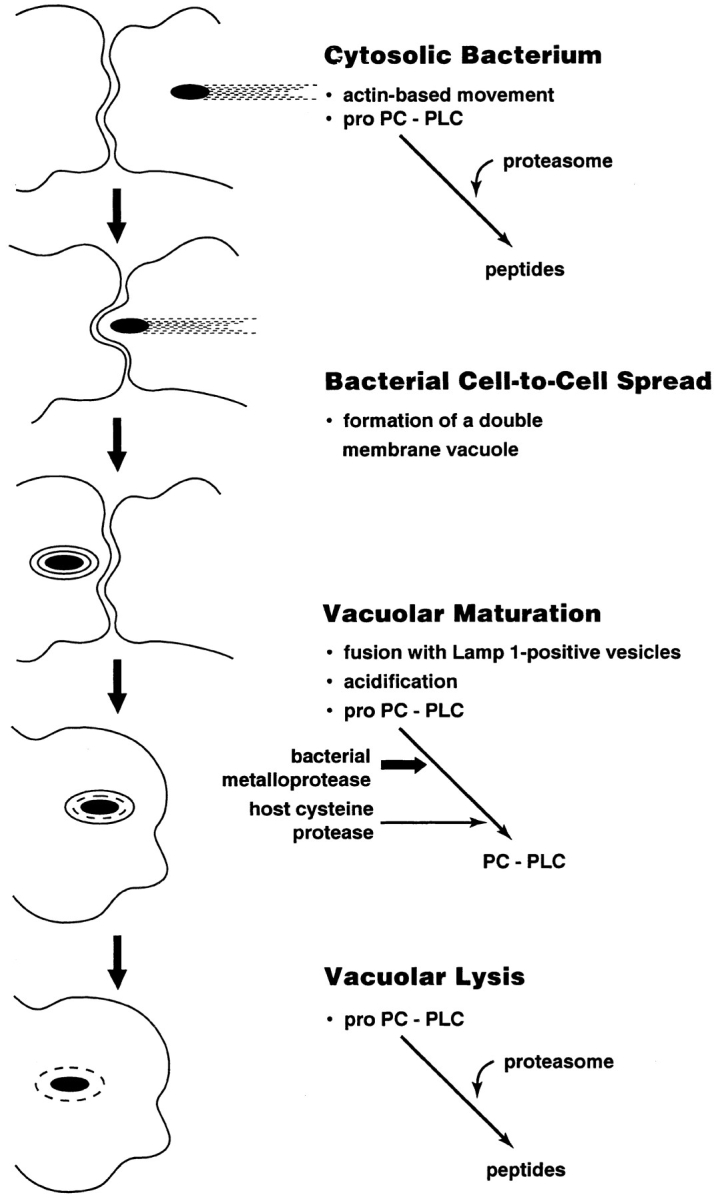Figure 9.

Schematic representation of the intracellular regulation of proPC-PLC activity. Asymmetric polymerization of host actin at the bacterial surface results in actin-based motility, which facilitates direct bacterial cell-to-cell spread. During cell-to-cell spread, the bacterium becomes transiently trapped in a double membrane vacuole, which fuses with Lamp1-positive vesicles. ProPC-PLC secreted in the vacuole is activated by either a bacterial or a host protease subsequent to acidification of the vacuole. Upon lysis of the vacuole, which is mediated in part by the phospholipases, the bacterium gains access to the cytosol where secreted proPC-PLC is degraded by the proteasome.
